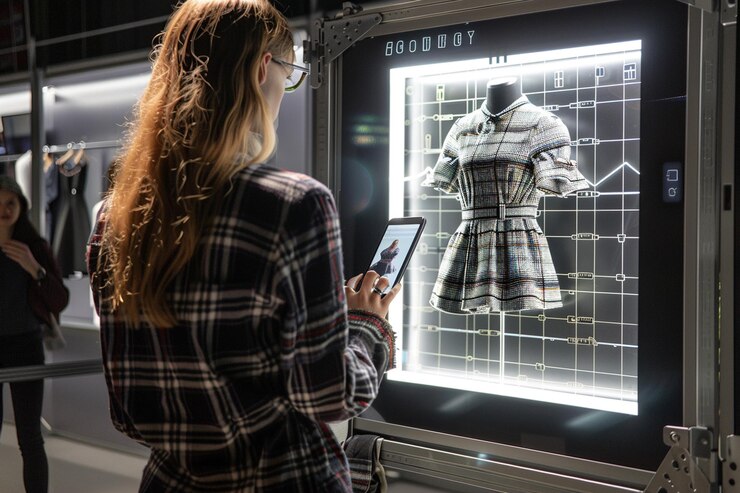Introduction to the Clothes Remover AI Tool
In the ever-evolving world of artificial intelligence, the clothes remover AI tool has emerged as a controversial yet highly innovative application. This advanced tool is capable of analyzing images and digitally removing clothing using machine learning algorithms and neural networks. While it was initially created for research and artistic enhancement, it has also sparked discussions around privacy, ethics, and technological responsibility.
This article explores the functionality, use cases, ethical concerns, and future of the clothes remover AI tool—breaking down how it works, who uses it, and what regulations are being discussed to prevent misuse.
What is a Clothes Remover AI Tool?
A clothes remover AI tool is a type of image editing software that uses deep learning to analyze and modify photos. Specifically, it is trained to identify human figures and then simulate the removal of clothing from those images, generating a modified version of the original.
These tools use technologies such as:
-
Generative Adversarial Networks (GANs)
-
Computer Vision
-
Deep Neural Networks
Despite the name, the goal isn’t always voyeuristic. In professional settings, it is used for:
-
Medical training simulations
-
Virtual try-ons for fashion
-
3D modeling and avatar design
-
Body anatomy illustrations
How Does the Clothes Remover AI Tool Work?
The clothes remover AI tool operates in several key stages:
1. Image Analysis
The AI identifies the contours of the body, clothing types, and layering based on the input image.
2. Data Reference Matching
It uses a trained dataset to guess what’s underneath the clothes based on patterns and probabilities. This is often based on thousands of previously processed images.
3. Digital Rendering
Finally, it reconstructs the image without clothing, often filling in guessed details with shadows, skin textures, and natural body features using GANs.
These steps are powered by highly advanced algorithms that continue to learn and improve as more images are processed.
Applications of Clothes Remover AI Tool
Though controversial, the clothes remover AI tool has found its place in a number of legitimate industries:
Virtual Fashion and E-Commerce
Retailers use this AI to help customers visualize how clothing might look on a realistic 3D model without physically trying them on.
Medical Imaging and Education
Some universities and medical platforms use stripped-down anatomical models to train students more efficiently and effectively.
3D Animation and Gaming
Designers use the tool to create realistic avatars and characters without needing to manually draw or code every detail of human anatomy.
Digital Art and Photography
Some artists use these tools to create conceptual, surreal, or abstract representations of the human body in their work.
Ethical Considerations and Privacy Concerns
While the has various practical applications, it raises serious ethical issues:
Privacy Violation
The most pressing concern is the potential misuse of these tools to manipulate images without consent, particularly involving private or personal photos.
Consent and Legality
Using the AI on someone’s image without permission can be considered digital harassment or defamation in many countries.
Deepfake Connections
This technology is often lumped in with deepfakes, and the overlap has led to increased regulatory scrutiny.
How to Prevent Misuse of Clothes Remover AI Tool
As with any technology, responsible use is key. Here are a few ways to regulate the use of such tools:
-
Strict Access Controls: Only licensed professionals or educators should have access.
-
Watermarked Output: AI outputs should be clearly marked as “synthetic” or “AI-generated.”
-
Image Verification Systems: Platforms can use reverse image search or metadata analysis to track manipulated content.
-
User Education: Raise awareness around ethical image editing and digital consent.
Legal Ramifications Around the World
Various countries are taking steps to regulate the misuse of AI image manipulation tools:
-
United States: Laws against deepfake porn now include similar clauses for AI-modified images.
-
European Union: The Digital Services Act (DSA) mandates tech transparency and responsible AI use.
-
India and Japan: Both have begun drafting regulations targeting privacy violations using AI-based photo tools.
Alternatives to the Clothes Remover AI Tool
If you’re looking for legal and creative ways to work with human anatomy or clothing design, here are better alternatives:
-
3D Body Modeling Software like MakeHuman or DAZ Studio.
-
Fashion Design Tools like CLO 3D or Marvelous Designer.
-
Medical Anatomy Platforms like Visible Body or BioDigital Human.
These tools offer high functionality without the ethical dilemmas associated with the .
The Future of the Clothes Remover AI Tool
AI continues to evolve at a rapid pace, and the is no exception. In the near future, we can expect:
-
Enhanced regulation and ethical guidelines
-
Better detection and blocking algorithms by social media platforms
-
Safer use in controlled environments such as healthcare or fashion design
The industry must find the balance between innovation and regulation to harness the power of this tool responsibly.
Final Thoughts
The represents the double-edged sword of modern technology—capable of impressive innovation and troubling misuse. While it holds potential in fields like fashion, medicine, and gaming, its dark side cannot be ignored. Responsible development, ethical use, and legal oversight are essential to ensure such tools serve humanity rather than harm it.
As AI continues to push boundaries, so must our vigilance to ensure it’s used for good.

